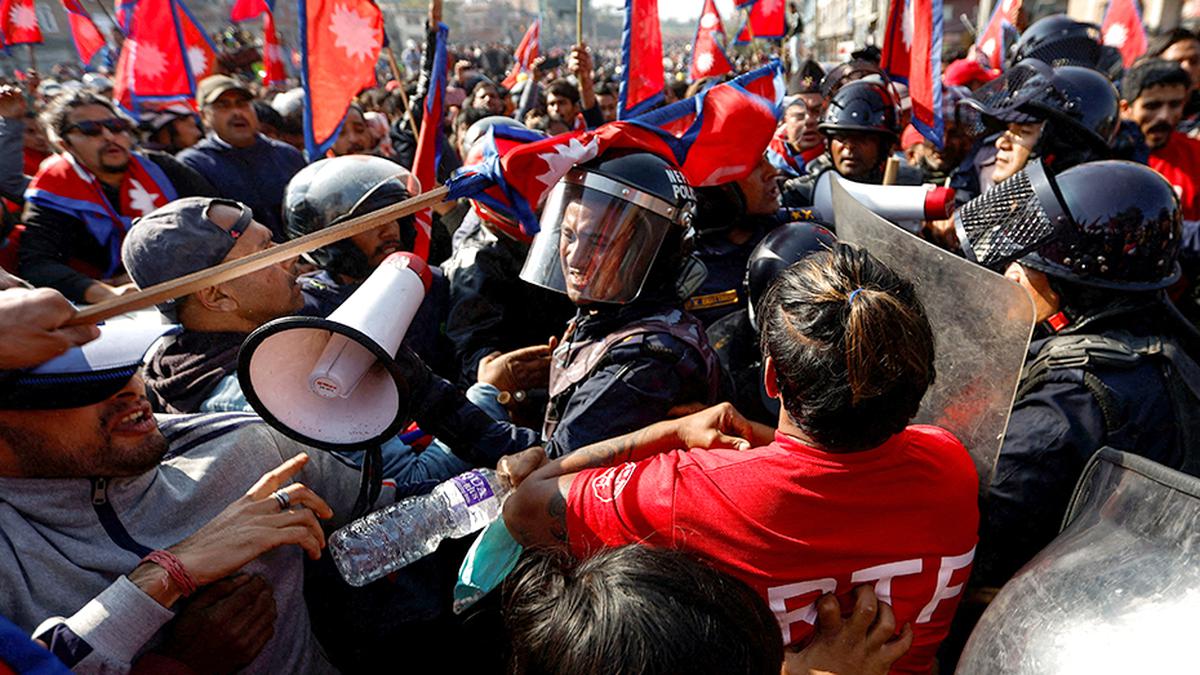
Sceptre consigned to history, but the spectre of monarchy haunts Nepali society Premium
The Hindu
15 yrs after monarchy abolished, pro-monarchy, pro-Hindu demo in Kathmandu sparks debate if republicanism under threat. 10K security deployed, but event passed off peacefully. People disenchanted with political leadership, but not against system. Demonstrations a wake-up call for keepers of republic to address people's aspirations.
The crown and sceptre were consigned to history 15 years ago in Nepal. But the spectre of monarchy continues to haunt Nepali society.
On November 22, people from diverse groups descended on Kathmandu, the capital, to stage a demonstration against the republican system. One among many of their other demands was reinstatement of the monarchy and reversal of Nepal as a Hindu state. Their number was far less than expected—the authorities had deployed around 10,000 security personnel in view of a huge protest. But it took people equally by surprise that they had travelled all the way to Kathmandu from various parts of the country at the call of just one individual who goes by the name of Durga Prasai.
A counter-protest was announced by Yuba Sangha, the youth wing of the main Opposition Communist Party of Nepal (Unified Marxist-Leninist), or CPN (UML). The government designated several areas in Kathmandu prohibitory zones fearing possible clashes and allotted two different places for them to demonstrate.
The demonstrations passed off largely peacefully with just sporadic clashes and no serious incidents reported. Nonetheless, the event did stoke a debate if the pro-monarchy, pro-Hindu demand is indeed getting ground and if the foundation of the Federal Democratic Republic of Nepal is so weak that it can be shaken by some on and off protests.
“The foundation of republicanism is definitely not weak,” says Dr. Lok Raj Baral, a former professor of political science at Tribhuvan University and a diplomat who served as Nepal’s ambassador to India. “The monarchy is dead and buried and it’s only in history books now. Nevertheless, regressive attempts by some forces are something that happen in any country’s political course.”
Maoist leader Pushpa Kamal Dahal “Prachanda”, the current Prime Minister, has in recent months made several statements publicly or during closed-door meetings that various elements have been trying to destabilise the system in Nepal. Mr. Prachanda is not the only politician to say so. Most of the leaders of the major political parties, mostly the ones who once cobbled up the republican Constitution, now and then continue to throw the “republicanism under threat” refrain. None, however, has offered any concrete evidence as to who and where the threat is from.
Narayani Devkota, a lecturer at Saraswati Multiple Campus, says creating an imaginary enemy is quite common among Nepali politicians and they are doing the same this time also.













